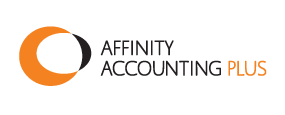As we start on the downhill run to the end of the financial year in Australia, that is, 30 June, we should be starting now to put our tax affairs in order, if we haven’t already done so. Part of that process should be asking ourselves if we are paying too much tax. This is an essential question that every taxpayer, whether PAYG, company, incorporated body, sole trader or partnership should ask, although for some people, it is difficult to tell without some professional assistance.
New Starts Should Have a Tax File Number
For the PAYG taxpayer, it is fairly straightforward as there are not a lot of opportunities for this group of taxpayers, unless they have investments aside from their employment, to manipulate the tax system. There are, however, a few things they should be aware of that could result in them paying more tax than necessary. Making sure they have a valid tax file number is the first issue. A tax file number identifies every taxpayer and stays with the same taxpayer for life.
Take, for example, someone starting out in their first job. If they do not already have a tax file number, they must apply to the Australian Taxation Office for one. While they are waiting for the tax file number to be issued, their employer can withhold tax at normal rates from their wages for 28 days. If they are unable to provide their employer with a tax file number after 28 days, the employer must tax them at the rate of 46.5%. Having a tax file number is the first opportunity to ensure that they do not pay too much tax. If you haven’t provided your tax file number to your bank, you may also have a credit available to claim at tax time.
How to Claim the Tax-Free Threshold
Their employer will ask them to complete a tax file number declaration and ask if they want to claim the tax-free threshold. This is the second opportunity to ensure that they do not pay too much tax. The tax-free threshold is the amount of money a taxpayer can earn before they have to pay tax and is currently $18,200 annually. The way to claim this tax-free threshold is to answer the question on the tax file number declaration in the affirmative. A negative answer will mean again, that the employer will withhold tax at the rate of 46.5% on all their earnings.
Personal Deductions
Taxpayers can minimise their tax liability by claiming deductions for a range of expenses when they lodge their tax returns. By being diligent throughout the year and keeping track of these expenses, as well as receipts, and including them in the tax return, the taxable income is reduced. If withholding tax remitted by the employer to the ATO throughout the year is more than the tax liability, the taxpayer receives a refund. The expenses that are eligible can change from one federal budget to the next, so it is wise to either check with the ATO on what can be claimed, or get professional advice from an accountant.
For company directors, business owners or other corporate entities, the tax picture becomes a lot more complex, and really needs examination and explanation by accounting professionals.

